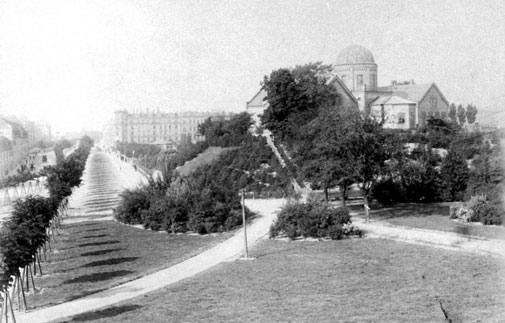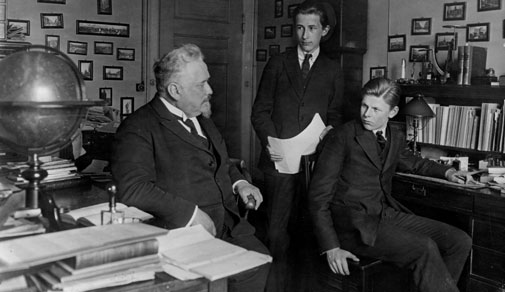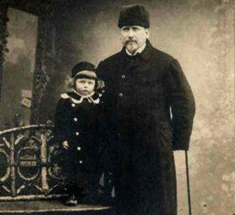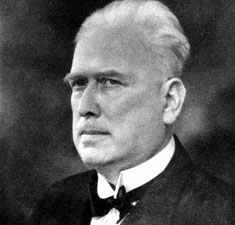Born under a lucky star
Bengt G.D. Strömgren (1908-1987) grew up under the scientific influence of his father, Elis Strömgren, who was a Professor of Astronomy. Bengt began his academic career early with a student job at what we today call the Niels Bohr Institute.
Bengt Strömgren was born in Göteborg 1908 to the astronomer Svante Elis Strömgren and Hedvig Strömgren, a dentist. The family Strömgren soon moved to the Copenhagen University Observatory at Østervold 3 where Elis had been appointed Professor of Astronomy.

A young talent grows up surrounded by astronomy
Bengt grew up surrounded by astronomy at the observatory, which was often visited by prominent foreign scientists, including Albert Einstein. Following the end of the First World War, Bengt's father began to teach his son advanced mathematics.
During the Spanish Influenza in January 1919 saw his chance to instruct Bengt, when the Metropolitan School was closed for several months due to the influenza epidemic. However, it was not the usual mathematics assignments the father subjected his 11 year old son to, but rather advanced mathematical analysis.

First publication at the age of 14
At the observatory Bengt Strömgren learned to operate a time-determination instrument. Until the Danish breakthrough in mass communications in 1924 there were no telephone or radio signals to indicate the time and one of the observatory's most important tasks was to determine Danish time.
Bengt Strömgren helped with the work, became involved in determining the positions of stars and began his first regular programme of observation in 1921. The following year - when he was 14 years old - his first publication came out in the form of a table of the data for an observed comet.
This was compiled in collaboration with his father and three assistants at the observatory.
Student job at the Niels Bohr Institute
During his first year at gymnasium Bengt Strömgren began to work as a laboratory assistant at Niels Bohr's "Institute for Theoretical Physics" (UITF) on Blegdamsvej. And after graduation Bengt enrolled in the University of Copenhagen, the same year his first solo-article was published in a Swedish scientific journal.
Elis worked unceasingly to help his eldest son get ahead on the scientific scene. In addition to private instruction, he took his son along to numerous scientific congresses, helped him with the publication of articles and on the whole made a continuous effort to hasten his talented son's career - and Bengt Strömgren hardly had any other choice.


Svante Elis Strömgren (1870-1947) was born in Hensingborg and acquired a doctorate in astronomy in 1898. From 1901-07 he was assistant to the editor of Astronomische Nachrichten, in Kiel.
In 1904 he became an Associate Professor at the University of Kiel, while at the same time he performed calculations for the associated Central Bureau for Astronomical Telegrams.
In 1907 he was appointed Professor of Astronomy in Copenhagen - a position he held until retirement in 1940, when his son took over the professorship.
Elis Strömgren was president of Astronomische Gesellschaft from 1921-30. (source: Rebsdorf 2005, s. 64)
